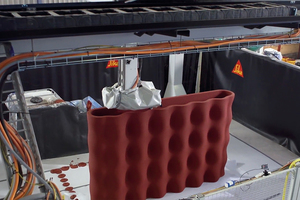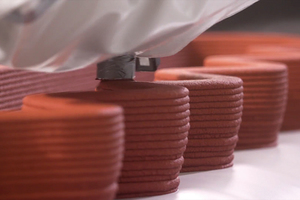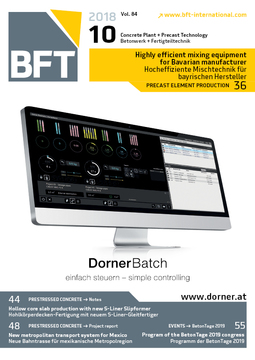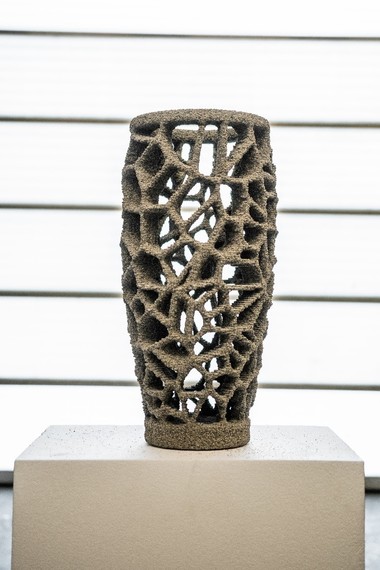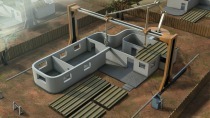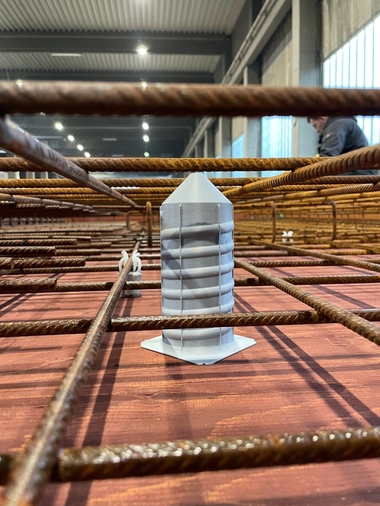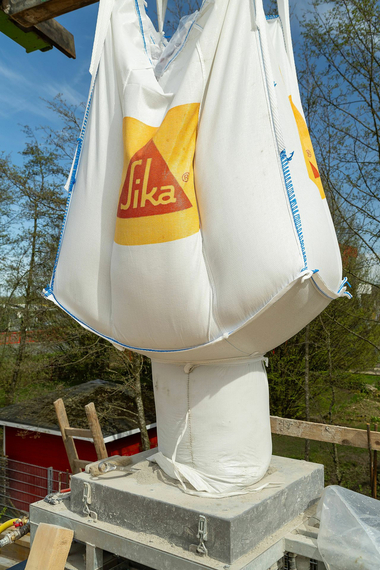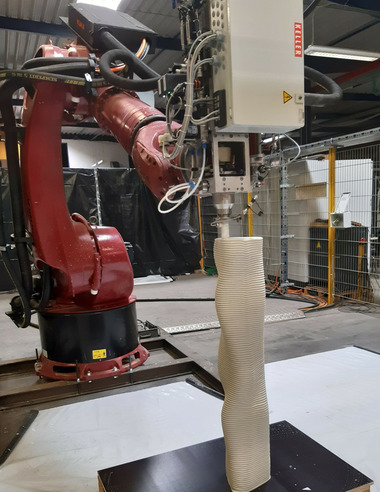Flexible shapes for concrete structures possible thanks to 3D printing
The digitalization is driving innovation and productivity in the construction industry. This also means fundamental changes in the value-added chain – from planning in 3D to the digital processes on the construction site. In the future, it will be possible, for example, to produce objects made of concrete with the aid of 3D printers, which means that architecturally demanding shapes will be implemented economically. Sika plays a key role in the development of industrial 3D concrete printing: The company has all the patented technologies required for this process, starting with a specially developed print head through to concrete additives that ensure time and cost efficiency.
3D printing is already well-established in some sectors – whether for the manufacture of aircraft components or car bodies. In the future, 3D printing will play a major role even when the construction with concrete is concerned. In particular, the production of precast elements by means of 3D printers is becoming more tangible. „Architects and planners more and more depart from the right angle,“ explains Peter Löschnig, Market Field Manager at Sika Deutschland GmbH. „The development of 3D concrete printing will enable them to implement complex architectural design easily in future.“ 3D printing technology allows dynamic curves as well as grid structures and thus far more diverse design options than conventionally produced precast concrete elements. To enable 3D printing to compete with the most economical solution so far, i.e. formed concrete, Sika is working on the development of an efficient 3D printing process.
Making 3D printing economic
When it comes to 3D printing, all the expertise that Sika has built up over decades in various areas comes together. This allows the construction chemicals specialist to supply all the components required from a single source with reduced costs: from robotics and Sika Pulsment process control system to extrusion with the Sika Mini Shot system through to 3D mortar and the Sika ViscoCrete technology that allows exact control of the concrete behavior.
This is complemented by the patent-protected print head technology developed by the 3D research team at the Sika Technology Center Widen in Switzerland. Cement and additives being precisely matched are mixed in the print head. As a result, the concrete hardens quickly, thus enabling the production of precast elements in an efficient way. Up to now, printing speed is 1 m/s, the component height that can be manufactured is 10 m.
Sika receives an award for 3D technology
By developing the highly effective printing process, Sika is a pioneer in the digitalization and industrialization in concrete construction, thus contributing to increasing the quality and precision of precast concrete construction. For this solution, Sika was awarded the „World of Concrete“ prize at the 2018 Intermat Innovation Awards in April, which honors outstanding achievements in the area of 3D concrete printing. Among other things, the jury evaluated the cost-effectiveness, functionality and ease of use of 3D printing as well as the development of the entire process.

